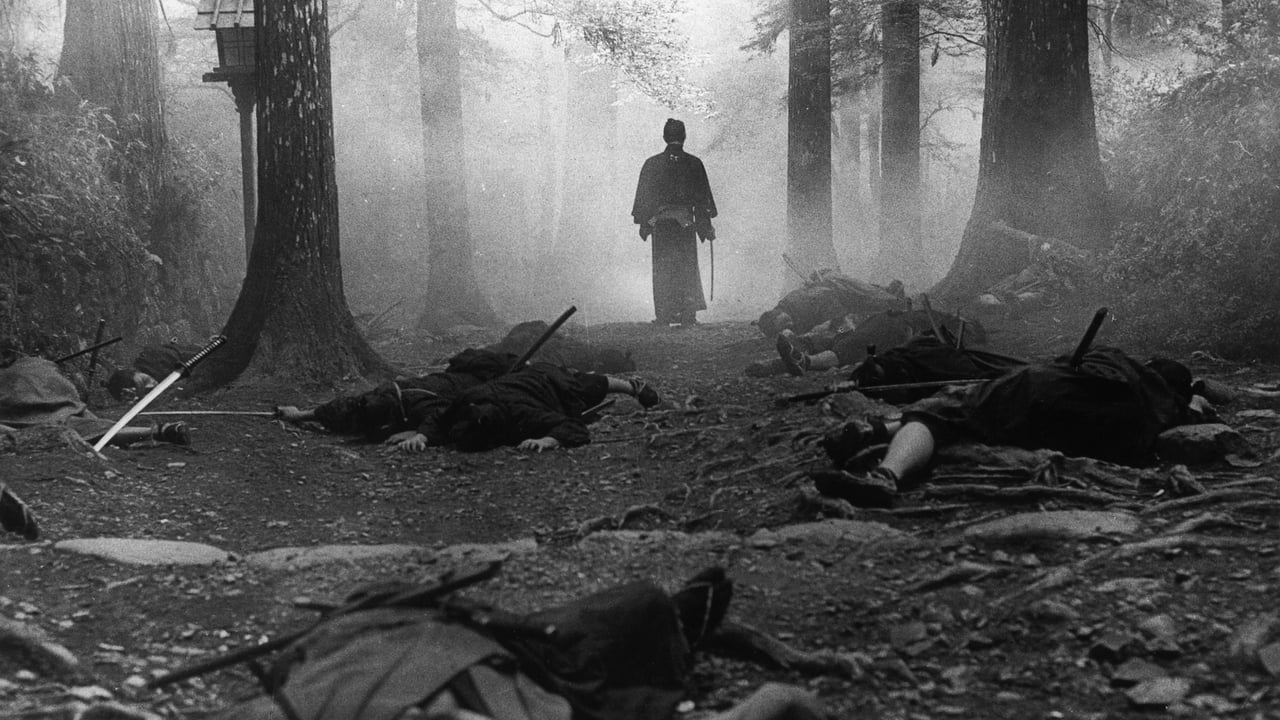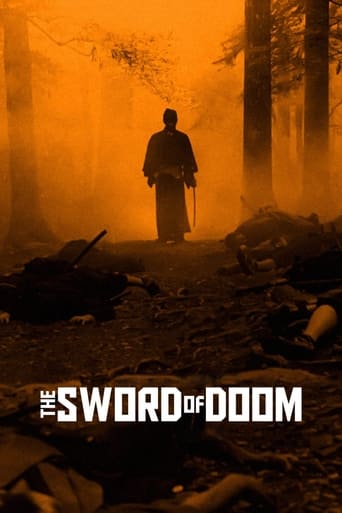



hyped garbage
everything you have heard about this movie is true.
View MoreI am only giving this movie a 1 for the great cast, though I can't imagine what any of them were thinking. This movie was horrible
View MoreIt’s fine. It's literally the definition of a fine movie. You’ve seen it before, you know every beat and outcome before the characters even do. Only question is how much escapism you’re looking for.
View MoreOver the last thirty plus years hyper-violent action films have been on auto-pilot, recycling the same basic formula where one man with a special skill takes on an army of bad guys in some justified and cathartic slaughter. The motivation for these slaughters almost always involves some variant of a wrong doing typically in the form of the abduction or murder of the protagonist's wife and/or kids. 1967's The Sword of Doom might be party responsible for influencing this tired formula, but Kihachi Okamoto's samurai spectacle is as guilty of cashing in on a pre-existing formula as are its American predecessors. While SOD was made at the height of the Zatoichi craze, the Zatoichi franchise would not exist if not for the WW2- era Japanese Samurai films of Kenji Mizoguchi and Akira Kurosawa (to name a few). Considering the summer blockbuster phenomena was started by a movie ripped from the pages of Kurosawa's The Hidden Fortress, then it's pretty safe to say Hollywood owes Japan, at the very least, its respectful props. But if you consider that post-Kabuki Japanese cinema was greatly inspired by Hollywood, then you're stuck studying a convoluted timeline where influences are consumed by the influenced. What's the point of pointing out this self- consuming timeline? Perhaps the realization there is no such thing as an original story in cinema, just original ways of re-telling the same stories. In other words...it's all in the details.As far as details go, SOD proves even throwaway exploitation films can be incredibly rich, where every element of the mise-en-scène trumpet expert craftsmanship and a commitment to exceptional detail. The most striking of these elements are the images photographed by cinematographer Hiroshi Murai. Murai's work utilizes the very literal expression of black and white photography, painting the contrast between good and evil with the competitive opposition of darkness and light:In addition to the beautifully stark visuals, SOD distances itself from its many American clones thanks to the un-redemptive nastiness of protagonist Ryunosuke Tsukue (Tatsuya Nakadai). Commercial action films with this type of main character rarely (if ever) get financed and the reasoning is simple: how can an audience be expected to root for such a venomous tyrant? By the time SOD comes to a brutal and surprisingly abrupt close, little sympathy is spared for Ryunosuke and even though we know he's possibly the greatest swordsman in all of Japan, few tears are wept in his honor.
View MoreWell, this one is just extraordinary. I'm a fan of these 'chambara' pics, and I can honestly say I've never seen a samurai film before where the main protagonist is a sociopathic killer (and, no, I wouldn't count Ogami Itto from the 'Lone Wolf & Cub' films in that category). Believe me, he is not a sympathetic character. Bizarrely, however, he can be viewed within the context of the movie as a kind of 'destroying angel', with each of his victims deserving his/her fate for one reason or another. Even the defenceless old man asks the Buddha for the gift of death (just before his wish is granted). As the film proceeds to its close, the body count rises and rises until it seems we perceive the action through the warped perspective of Ryunosuke himself, and it becomes impossible to tell if what we see is reality or simply his twisted fantasy. I wonder if Scorsese was partly inspired by this when he filmed 'Taxi Driver'. You owe it to yourself to watch this one. Just a shame that the DVD itself is not a bit more interesting.
View MoreMost of the comments have focused on direction. I'm more interested in the acting. Naturally, that is a function of how the director shapes performances on the set and in the editing suite, but the director has to have something to work with.Tatsuya Nakadai has, for his long career as a performer and teacher, a justifiably great reputation. But there's an arc to his development as an actor that has him starting out by chewing scenery as a younger performer and gradually becoming a decent, and then sublime, actor.Sometimes in his early performances a director was able to rein in and/or harness Nakadai's excesses to good effect. For instance, I don't think Kurosawa brought him under control at all in "Sanjuro," but managed to make the best of his hamminess in "Yojimbo," largely by having him channel Elvis Presley's swagger and sneer.The situation is similar in "Sword of Doom," except in this case Nakadai is channeling James Dean's brooding intensity, but with not nearly the subtlety James Dean was famous for. That sort of subtlety comes a lot later in Nakadai's career, most notably in "Kagemusha," when Kurosawa, or Nakadai himself, found his volume knob and turned it down. We don't realize how fortunate we were to have Dean in full-blown genius mode from the beginning. He was a preternaturally old soul. Nakadai just had to age the normal way in order to uncover that inner core that makes a screen performance transcendent.
View MoreIn feudal Japan,Ryunosuke (Tatsuya Nakadai)is a disgraced samurai and master swordsman with a very special technique, is due to have a challenge duel at his fencing school, his challenger Bunnojo Utsuki is to become a new sword master at the fencing school, but if he loses, he will be disgraced and unable to take his position. Bunnojo's wife Ohama pleads with Ryunosuke to throw the match, offering her virtue in return, which he accepts, despite this he still kills her husband after he makes an illegal fencing move, in a fit of anger after learning of his wife's infidelities. Some years later Ryunosuke has now taken Ohama as his woman, he's becoming ever more deranged and randomly kills people for no reason other than he likes it. Nothing seems to content Ryunosuke, not even his newly born son, "I trust only my sword in this world. When I fight, I have no family" says the cool killer to his new spouse after she pleads with him to give up his killing ways, he seems like a lost soul just searching for a cause to fight for or waiting for his own death, but unable to find an opponent capable of fulfilling his wish. He tries to challenge another master swordsman Shimada (Toshiro Mifune) but all he succeeds in doing is denting his own confidence after Shimada disposes of dozens of Ryonosuke's henchmen and leaves him with a few words that hurt more than any sword, "The sword is the soul. Study the soul to know the sword. Evil mind, evil sword" Sword of doom is full of many side plots, very few of which are fully explained, but its an epic beautifully filmed tale of an antihero, that despite his bad character traits, that should have the viewer loathing him, yet he still retains somewhat of a hero status with the viewer, due mainly to the fantastic, intense performance by Nakadai which is exemplified perfectly in the memorable grand finale, which sees his character battle it out in a burning building with the spirits of all those he has killed in his lifetime. Again Wonderful.
View More